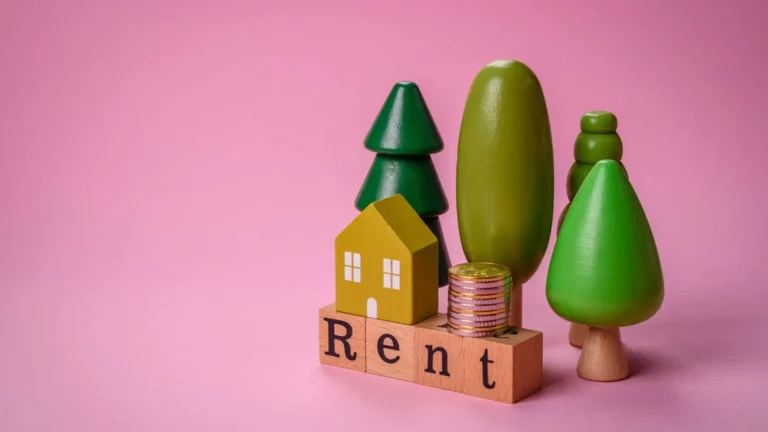Table of Contents
Beyond the Monthly Check
Millions of Americans sign a check or hit “pay now” for rent every month. It feels simple enough: you pay to live in your apartment or house. But beneath that one number lies a patchwork of inclusions, exclusions, and hidden costs that can make renting a stable choice or an expensive trap.
For families living paycheck to paycheck, understanding exactly what your rent covers, and what it doesn’t, can make the difference between staying afloat and falling behind.
This guide unpacks what’s usually included in rent, what’s not, how it varies by region and property type, and how to plan for the unexpected costs that landlords rarely mention.
The Basics: What Rent Typically Covers
At its most basic, rent is payment for the right to occupy a property. However, rent often includes more than just the walls and roof.
1. Shelter and Access
Your rent guarantees you physical access to the home or apartment. This includes the space and the landlord’s responsibility to keep it habitable — safe plumbing, heating, and structural integrity.
2. Common Area Maintenance (in Multifamily Housing)
In apartments and condos, rent often covers the upkeep of shared spaces: hallways, elevators, parking lots, and lobbies. Landscaping, snow removal, and pest control are usually bundled into your monthly payment.
3. Basic Appliances and Fixtures
Most rentals come with kitchen appliances (stove, refrigerator, sometimes dishwasher) and bathroom fixtures. In many states, landlords must provide hot water and a working heating system by law.
4. Certain Utilities — Sometimes
In some buildings, landlords cover water, trash, or even heat. In others, utilities are fully tenant-paid. What’s included often depends on the age of the building, local rental traditions, and utility metering.
Read related blog: Renting vs Buying: Financial Pros and Cons in 2025
Utilities: The Biggest Gray Area
Utilities are the most confusing part of any rental agreement. They can turn an “affordable” apartment into a budget buster if you’re not careful.
- Utilities: Many older urban buildings have water, gas for heat, or trash removal. College-area rentals often include internet.
- Excluded Utilities: Electricity and internet are most commonly left to tenants. In some suburban rentals, tenants must also handle lawn watering or septic tank maintenance.
- Heat vs Cooling Divide: Landlords in northern states are more likely to cover heat, while tenants usually pay their own AC bills in southern states.
Tip: Ask for average utility costs before signing. An apartment with “low rent” but $300/month utility bills isn’t affordable.
Amenities: What Rent Buys Beyond Shelter
Modern rentals often bundle lifestyle perks, but the value varies.
- Fitness centers & pools: Many apartment complexes advertise gyms and pools as “included” in rent. But remember, you’re paying for them whether you use them or not.
- Parking: Sometimes free, sometimes extra. Parking can cost $100–$400/month in cities, separate from rent.
- Laundry: In-unit machines save money compared to coin-operated shared laundry. Don’t underestimate this cost if it’s not included.
- Security: Some complexes include 24-hour security or controlled access. In other cases, tenants must pay separately for alarms or cameras.
Repairs and Maintenance: Where Lines Blur
Legally, landlords must keep rentals habitable. That includes fixing major systems (heat, water, structural issues). But the definition of “maintenance” varies.
- Landlord-paid repairs: Plumbing leaks, appliance failures (if provided), broken heating systems.
- Tenant-paid repairs: Damage caused by tenant negligence, clogged drains, light bulb replacement, and air filter changes.
- The gray zone: Cosmetic updates. Want the carpet replaced because it’s old? Unless it’s unsafe, you may be on your own.
What Rent Does Not Cover (But Tenants Forget)
This is where most renters get blindsided. Rent rarely includes:
- Renter’s Insurance: Landlords insure the building, not your stuff. If there’s a fire, your landlord’s policy won’t replace your clothes, furniture, or electronics. Renter’s insurance costs $15–$30/month.
- Internet and Cable: Often separate, unless bundled in student housing.
- Furniture: Unfurnished units are the norm. Setting up even a modest apartment can cost $3,000–$5,000.
- Pet Fees: Non-refundable deposits, monthly “pet rent,” and higher security deposits are common.
- HOA Fees (if subletting): Renters in condos sometimes discover hidden HOA costs passed on by owners.
Regional Differences in What Rent Includes
Where you rent matters as much as who you rent from.
- New York City: Many apartments include heat and hot water (by law), but tenants pay electricity and often face high broker fees.
- Midwest: More single-family rentals, where tenants usually pay all utilities and do lawn care.
- Sunbelt States: Air conditioning is essential, but rarely included. Electricity bills can dwarf rent in summer.
- West Coast: Water and trash are often included, but seismic retrofitting fees may be passed on.
The Hidden Costs of Rent
Even if your rent feels “all-in,” there are costs most tenants don’t factor in:
- Moving Costs: $1,000–$5,000 depending on distance.
- Application Fees & Credit Checks: $30–$75 each, sometimes multiple per apartment search.
- Deposits: Security deposits (often 1–2 months of rent), pet deposits, and key fob deposits.
- Rent Increases: Even if everything feels affordable now, annual hikes (2–10% in some cities) can quickly shift the math.
Renting vs ‘All-Inclusive’ Leases
Some landlords advertise “all-inclusive rent”, covering all utilities and amenities. These can provide peace of mind, but they usually cost more overall.
- Pros: Easier budgeting, fewer surprise bills.
- Cons: Less control. If you’re frugal with energy, you subsidize heavier users.
For families on tight budgets, “all-inclusive” can prevent bill shock. For individuals who conserve, it may not be worth the premium.
The Legal Side of Rent Inclusions
Many renters assume that what a landlord verbally promises will hold up legally, but the law only protects what’s in writing. Lease agreements should spell out what’s covered in rent — utilities, maintenance responsibilities, amenities, and fees. Landlords can shift costs mid-lease without this clarity, leaving tenants little recourse.
For example, some states require landlords to cover pest control or trash removal; others leave it negotiable. In certain cities, landlords must maintain heating to a minimum indoor temperature, but air conditioning is not legally required. These variations mean tenants must study leases carefully, ask pointed questions, and, if possible, have everything included in the rental terms documented in writing.
Understanding landlords’ legal obligations helps families avoid costly surprises and protects them from unfair charges that might not be enforceable.
Seasonal Costs Tenants Often Overlook
Rent may feel predictable month to month, but seasons can bring hidden costs that aren’t covered.
- Winter: Tenants often face higher heating bills, snow removal fees in single-family rentals, or the cost of weatherproofing drafty units.
- Summer: Air conditioning bills can skyrocket, especially in southern states where landlords rarely cover electricity.
- Storm Damage: In hurricane- or flood-prone regions, tenants may discover their landlord’s insurance doesn’t cover their belongings — making renters’ insurance essential.
- Pest Season: Spring and summer may bring roaches, ants, or termites, and while landlords handle infestations in some states, in others, the tenant is responsible for ongoing pest treatments.
Rent might feel like a fixed cost, but seasons reveal how variable the “real” monthly cost of housing can be.
Negotiating What’s Included in Rent
Not every rent agreement is set in stone. Many landlords, especially smaller property owners, are open to negotiation if it helps secure a reliable tenant. Renters can sometimes push for:
- Utilities Bundled In: Asking for water or trash to be included for a slightly higher rent can simplify budgeting.
- Appliance Upgrades: Negotiating for in-unit laundry or a new refrigerator before move-in.
- Maintenance Terms: Having landlords agree in writing to cover items like lawn care or pest control.
- Parking: Bundling parking into rent instead of paying a separate monthly fee.
For tenants in competitive rental markets, landlords may have less room to budge. But in slower markets or with private landlords, negotiation can transform a rental from a financial burden into a more manageable, predictable arrangement.
The Role of Rent Inclusions in Housing Inequality
What’s included in rent doesn’t just shape individual finances; it reflects broader economic inequality. Higher-income renters often secure “luxury apartments” with all-inclusive rents (utilities, gyms, concierge services), creating stability and predictability. Lower-income renters, on the other hand, are often saddled with stripped-down leases where every service, from water to trash pickup, is an extra cost.
This inequality means that renters with fewer resources often pay more in variable, unpredictable expenses than those who can afford premium housing. The lack of inclusions disproportionately affects working-class families, creating cycles where housing costs eat into savings and prevent upward mobility.
Understanding this context is key: inclusions aren’t just conveniences; they can be lifelines that protect vulnerable renters from instability.
Read related blog: How to Save Money for an Apartment
What’s Usually Included vs Excluded in Rent
| Category | Often Included in Rent | Usually Excluded (Tenant Pays) | Sometimes Hidden/Extra Fees |
| Utilities | Water, trash, sewer (in some apartments) | Electricity, gas, heating oil | Internet, cable, or shared Wi-Fi fees |
| Maintenance & Repairs | Structural repairs, major appliances (stove, fridge) | Small fixes, light bulbs, pest control (varies) | Lawn care, snow removal in single-family rentals |
| Insurance | Landlord’s building insurance | Tenant’s renter’s insurance (mandatory in many leases) | Pet damage insurance or liability add-ons |
| Amenities | Gym, pool, shared lounge (in complexes) | Parking (in many cities), storage units | “Amenity fees” or package delivery fees |
| Appliances | Stove, oven, refrigerator (standard) | Washer/dryer, dishwasher (unless specified) | Appliance rental fees are not included |
| Property Taxes | Always the landlord’s responsibility (built into rent) | N/A | None (but tax hikes can push rent higher) |
| Move-In/Move-Out | N/A | Security deposit, first/last month’s rent | Cleaning fees, non-refundable admin fees |
| Utilities in Luxury Units | Heat, A/C, Wi-Fi in newer/luxury rentals | Still may exclude electricity or cable | Tech or “smart home” subscription charges |
Future Trends: How Rent Inclusions Are Evolving in 2025
The rental landscape isn’t static. As housing markets evolve, so do rent inclusions:
- Smart Homes: More landlords include Wi-Fi-enabled thermostats, smart locks, and internet service in the rent package.
- Bundled Services: Some complexes are experimenting with “subscription-style” rent, bundling utilities, streaming services, and insurance into one bill.
- Green Energy Costs: Solar-powered buildings in some states now include electricity as part of rent, lowering utility burdens.
- Corporate Landlords: As large investment firms buy more rental properties, inclusions are becoming standardized. Depending on the firm’s strategy, they are sometimes generous, sometimes minimal.
For tenants, “what’s included” is shifting, and staying informed is key to evaluating whether a lease represents fair value.
How Beem Helps Renters Stay Steady
Even when rent includes “everything,” surprises pop up:
- A sudden rent hike.
- A deposit you didn’t expect.
- A utility bill you thought was included but wasn’t.
Beem’s Everdraft™ gives renters up to $1,000 to cover shortfalls without predatory loans or overdraft fees. It keeps your budget intact when landlords shift terms or bills arrive unexpectedly, ensuring your housing stays secure.
The Bottom Line: Know What You’re Really Paying For
Rent isn’t just a number on a lease; it’s a bundle of promises, services, and sometimes hidden gaps. The key is clarity. Ask landlords what’s included, get average utility costs, and plan for extras like insurance, internet, and furniture.
In 2025’s high-cost housing market, the families who thrive understand the fine print, budget for the gaps, and keep cushions for the surprises. With tools like Beem at your side, renting can be more than just a monthly check; it can be a stable step in your financial journey.
FAQs on What’s Included in Your Rent (And What’s Not)
Does rent usually include utilities?
Water and trash are sometimes included in many cities, while electricity and internet are not. Always confirm before signing.
Do I need renters’ insurance if my landlord has property insurance?
Yes. Your landlord’s insurance only covers the building. Renter’s insurance protects your belongings and liability, and is usually very affordable.
Why is my rent higher than advertised after move-in?
Because of hidden costs like utilities, parking, pet rent, or required fees (trash, pest control), always ask for a full breakdown.
What’s the advantage of “all-inclusive” rent?
It makes budgeting easier and protects against surprise bills. But you’ll usually pay more; careful savers may subsidize neighbors who overuse.
How does Beem help renters manage housing costs?
Beem provides Everdraft™ to cover gaps caused by rent hikes, deposits, or utility surprises. Offering instant cash up to $1000 with no interest, credit checks, due dates, or income restrictions, it’s a safe way to protect stability when the landlord’s fine print shifts the costs onto you. Download the app now!














































